
I still remember the first time I saw my neighborhood. It was the fall of 1998, and I’d just moved here from Los Altos to attend San Francisco State. My roommate, Rachelle, had lived in San Francisco for two years already and knew where to go and what to see.
One day, we decided to explore the city. In the car, she said, “I have to bring you to this cafe in the Richmond. They have the best raspberry rings.” A raspberry ring, I learned, is a pastry stuffed with raspberry preserves. Apparently, I hadn’t lived until I tried one.
We drove up the Great Highway to the Richmond district, a neighborhood on the west side of the city. To our left, Ocean Beach was shrouded in fog. There were no people in bathing suits or blankets on the sand. It was empty except for gulls, pelicans, and crows circling overhead.
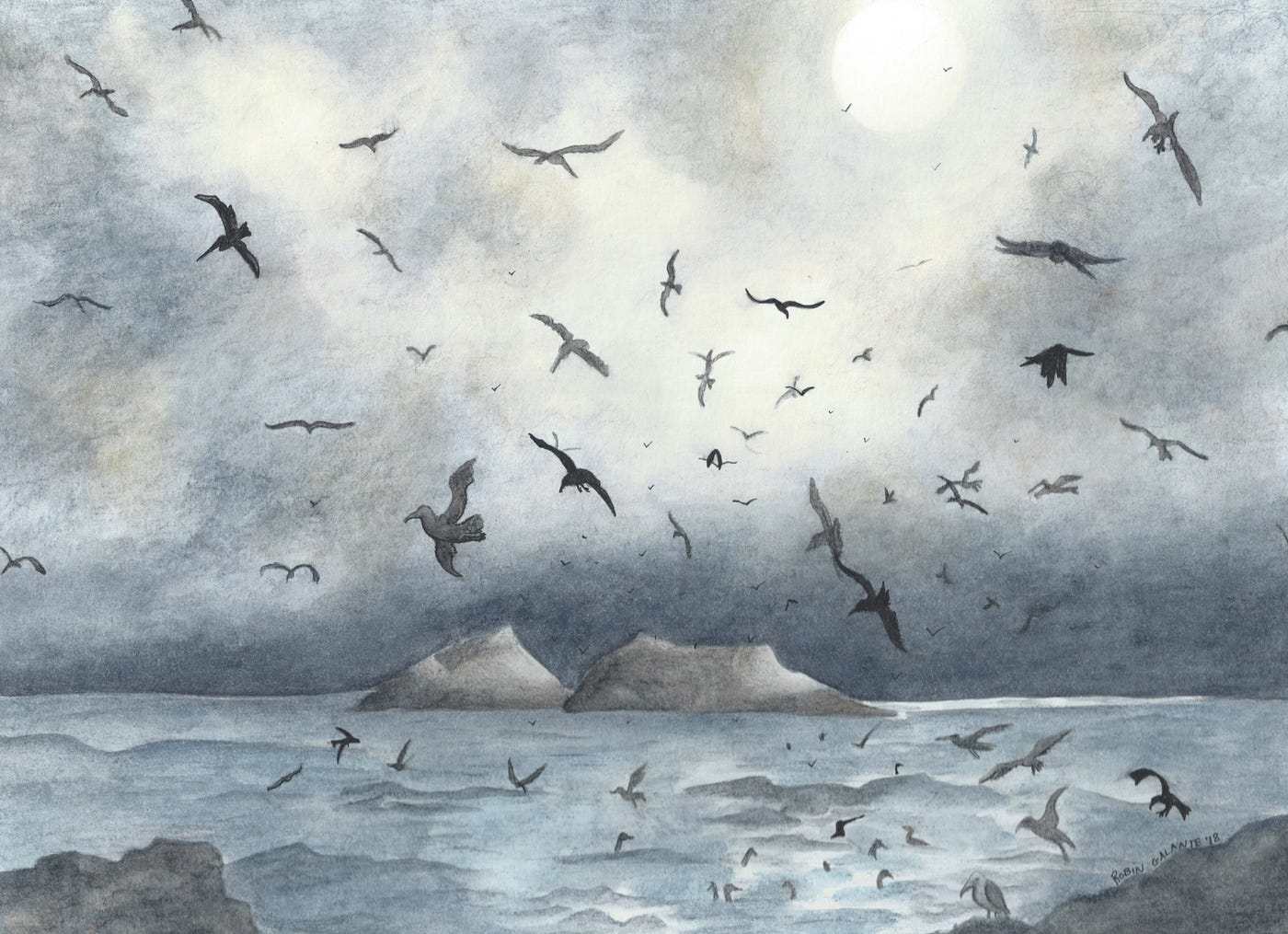
We passed neat rows of houses and apartments with paint peeling on account of the sea air and large windows facing an ocean that was barely visible under the layers of white mist.

We turned right on Balboa Street and went up a steep hill into what looked like a small town. The street was lined with coffee shops, Chinese restaurants, nail salons, and laundromats.
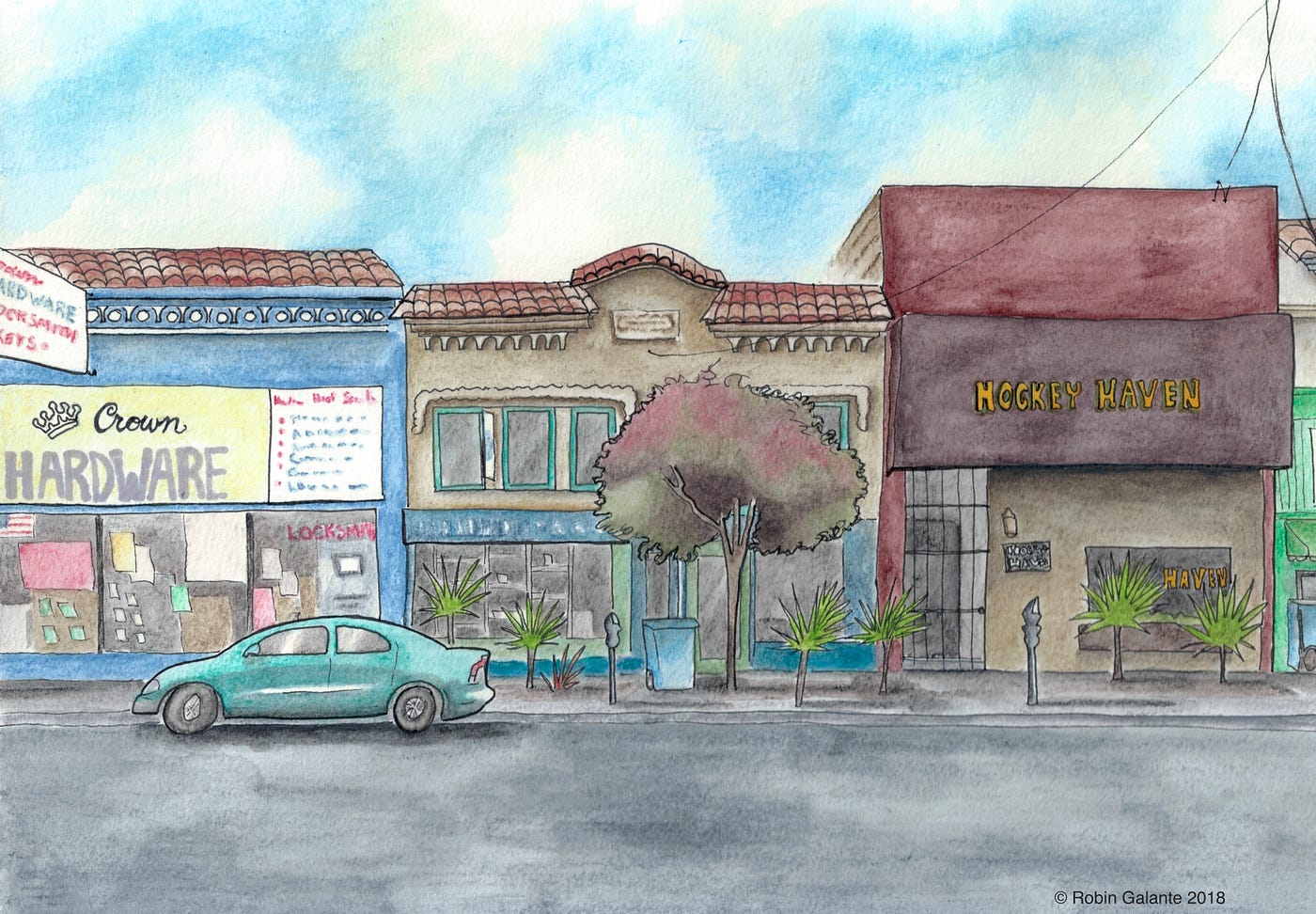
We passed Gus’ Discount Tackle. In addition to fishing gear, they sell a delightfully odd assortment of items, including fine china, raincoats, and American flags. The owner, Stephanie, took the business over from her dad, who opened the shop over 60 years ago.
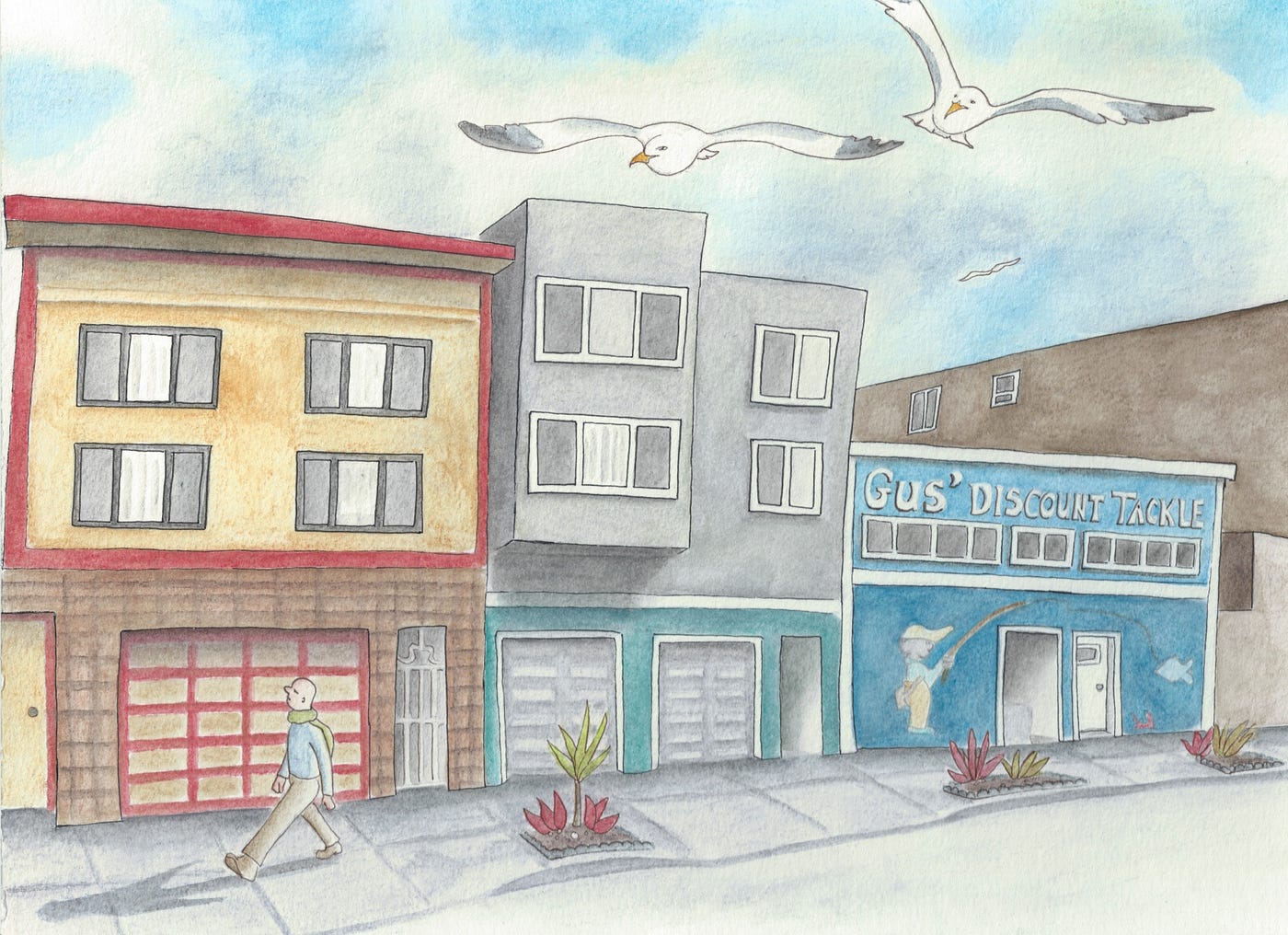
I saw the Balboa Theatre for the first time, an old movie house with a neon marquee I could see from blocks away, even in the fog. Built in 1926, the Balboa has a charming art-deco-inspired lobby with arcade games and vintage movie posters. In the years to come, I would see many matinees there — mostly Star Wars movies — with my boyfriend at the time, who’s now my husband.
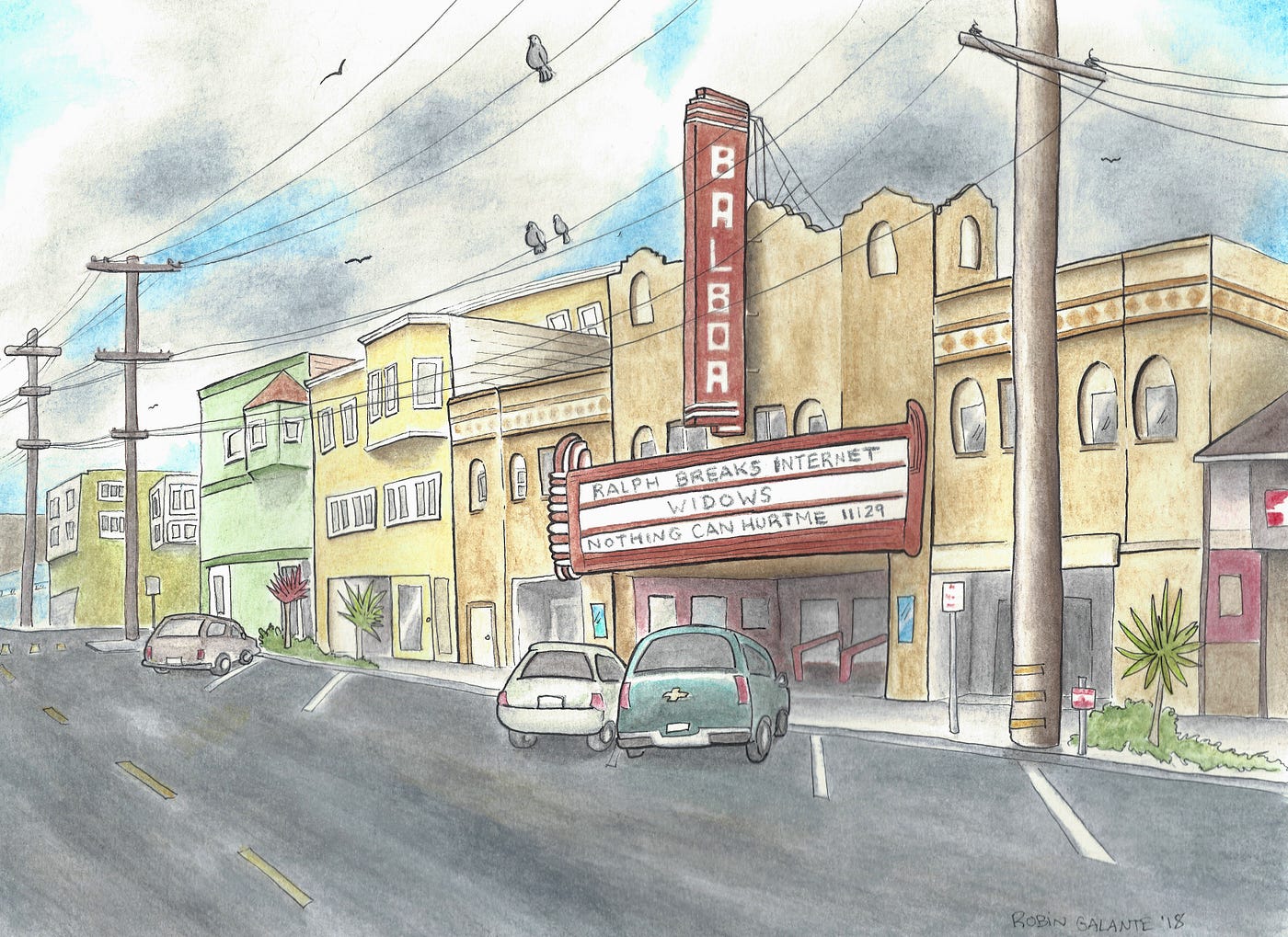
Rachelle parked in front of our destination, Simple Pleasures Cafe. The place seemed to glow inside, with the hum of conversation and live jazz music spilling out onto the sidewalk, where people sketched in notebooks, smoked cigarettes, and played chess at the outdoor tables despite the damp, cold air. It was comfortable and casual, and filled with people young and old.
I would end up spending countless hours on the comfy couch in the back of the cafe, studying, sketching, and writing in my journal. And I would get to know all the regulars: Two-Time Tony, who sat outside in a top hat and layers of sweaters and repeated every sentence twice; Dae, the dreadlocked barista with an apartment upstairs; Helena, the next-door neighbor who lovingly tended to the flowers in the planter boxes outside; Bruce, the electrician and math tutor who always had a joke to tell; Ahmed, the owner, who always welcomed his customers with a smile and a hug.
I would go there almost every day, walking through the maroon doors after I got fired, after I got promoted, and after my mom died. I would walk through those doors for the next 20 years (and counting).
Some of the regulars have passed away; some have moved. But many are still here, and Simple Pleasures is alive and well — one of the last true Bohemian cafes in the city. And Rachelle was right: the raspberry rings are amazing.
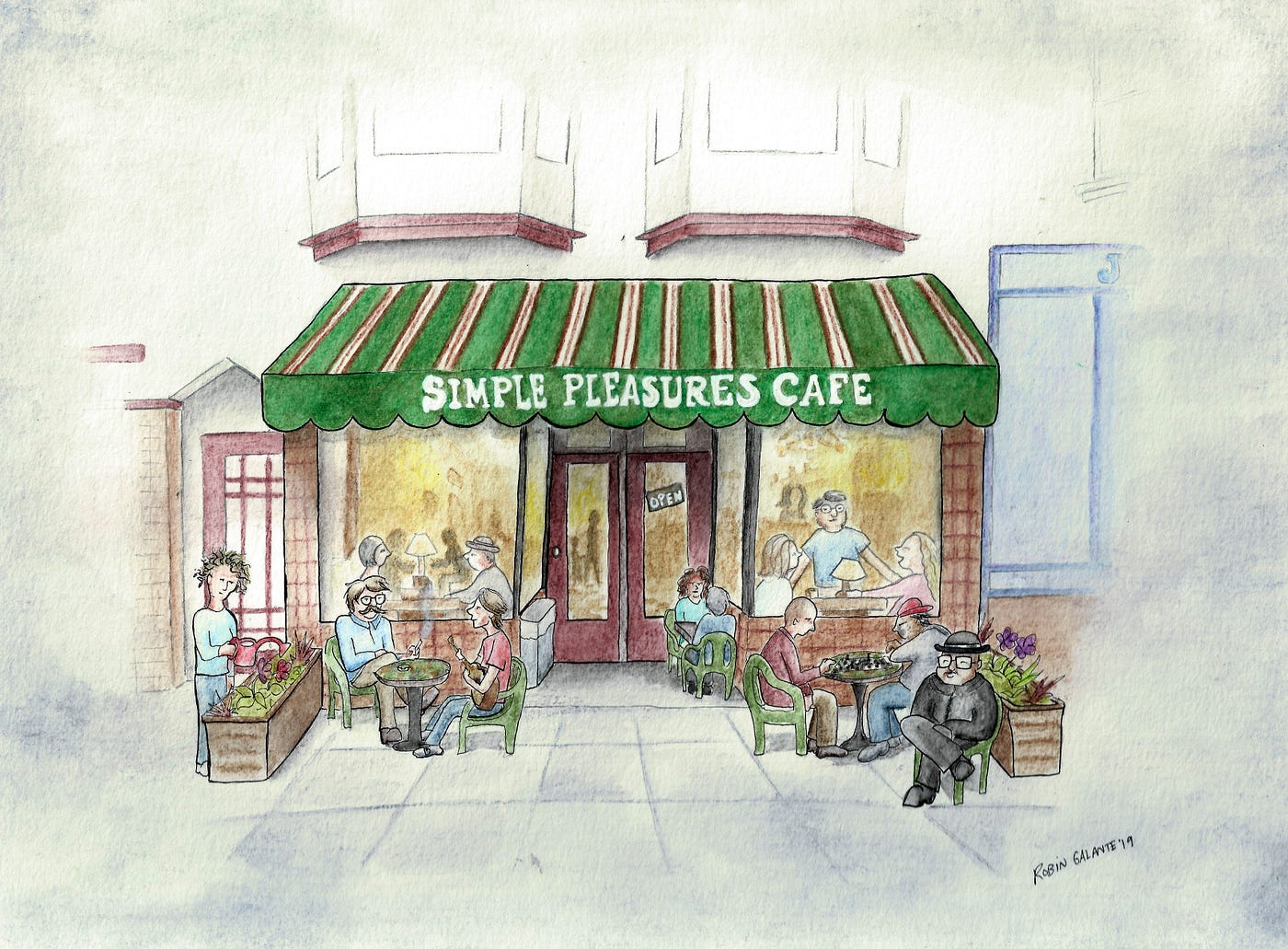
I graduated from college in 2000, near the end of the first dot-com bubble. I wasn’t sure what to do career-wise, so I moved back to my hometown. Los Altos is just a 45-minute drive away from San Francisco, but it was a world away culturally. People in Los Altos were cordial and reserved. Women wore full makeup to the grocery store, along with pristine white tennis shoes and perfectly styled hair. The only “action” in town after 6:00 p.m. was at the Los Altos Bar Grill. Peet’s and Starbucks were the only cafes.
I got a job as a receptionist at a tiny graduate school called the Institute of Transpersonal Psychology. The school offered classes such as “Women’s Spiritual Development” and “Altered States of Consciousness.” I loved it there. The people were sweet and interesting, and my work schedule was a completely sane nine-to-five.
San Francisco, with the challenges it presented, ignited my creativity and became my muse.
But as I cheerfully answered the phone and greeted students, professors, and staff, I felt like I was missing out on something. I didn’t know exactly what that “something” was, but I knew I wouldn’t find it cooped up in an office.
What I knew for sure was that I missed the city—the ghostly sound of the foghorns singing across the bay, the hum and snap of Muni buses rolling by, the colorful buildings beneath tangles of overhead wires. Most of all, I missed my cafe, Simple Pleasures.
After three years, I quit my comfortable job to pursue a dream I couldn’t yet put into words and moved back to San Francisco.
Rent was insane even back in 2003. I found a studio in the Richmond for $1,000 per month. Since I didn’t want to work in an office again, I had to get creative to make ends meet. I cobbled together a living by restoring old furniture at Muzzy’s Attic, a consignment shop two doors down from Simple Pleasures that sold all kinds of vintage treasures. I designed window displays for local stores, such as Beyond the Sea, a bath and beauty store in Noe Valley. I worked part-time as a personal assistant and, funnily enough, wrote résumés for people looking for office jobs.
San Francisco, with the challenges it presented, ignited my creativity and became my muse. I started making art. I learned how to play the guitar and wrote songs. I didn’t need much money for entertainment; I spent most of my free time walking around like a tourist, taking in the sights.

Like everyone who came before me in this gold-rush town, it’s sometimes hard for me to embrace the new San Francisco. Ornate Edwardians and Victorians in every color of the rainbow are being demolished and replaced by modern, boxy condos in shades of gray. Friendly cafes with big communal tables, couches, and shelves filled with games and books have been transformed into gleaming workspaces with rows of laptops lined up on sleek white counters. Even the skyline has changed, with the Salesforce Tower dwarfing the older, more modest buildings in its shadow. Some of my favorite stores, like Muzzy’s Attic and Beyond the Sea, have closed.
But some things haven’t changed. On my walks through the neighborhood, I walk by houses with clashing paint jobs.

My husband and I visit small theaters with neon marquees that shine through the fog, like the Balboa, of course, and the 4-Star Theatre over on Clement Street.
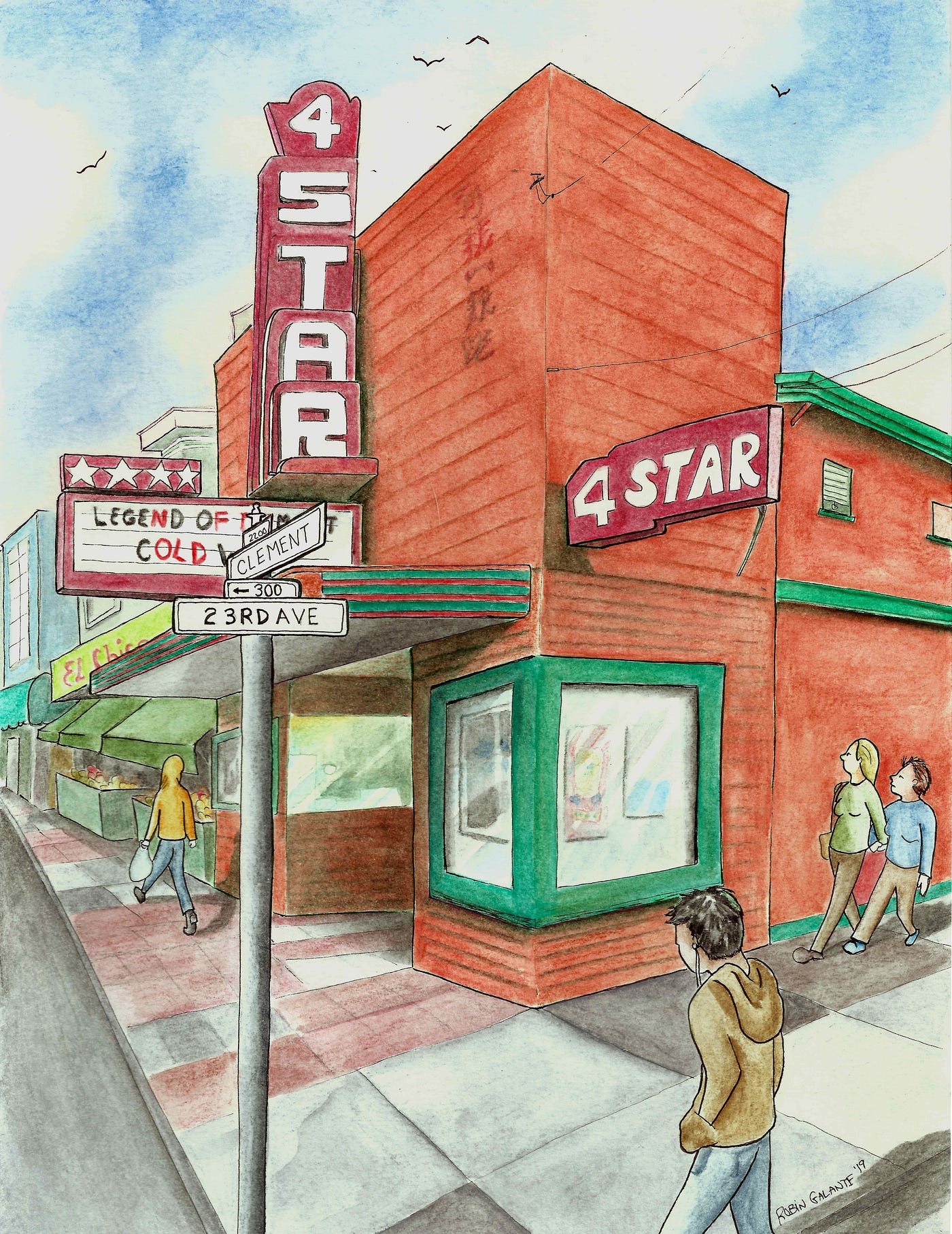
Living here in these changing times gives me a unique sense of nostalgia not only for the past but for the present. I realize that my corner of the city may someday become virtually unrecognizable, like the Mission and the Fillmore. As an artist, I try to capture how it looks and feels now, before it changes.

You won’t see most of these places in the pages of a guidebook. They are easy to miss unless you take the time to look for them. And they’re easy to forget until they’re gone.







